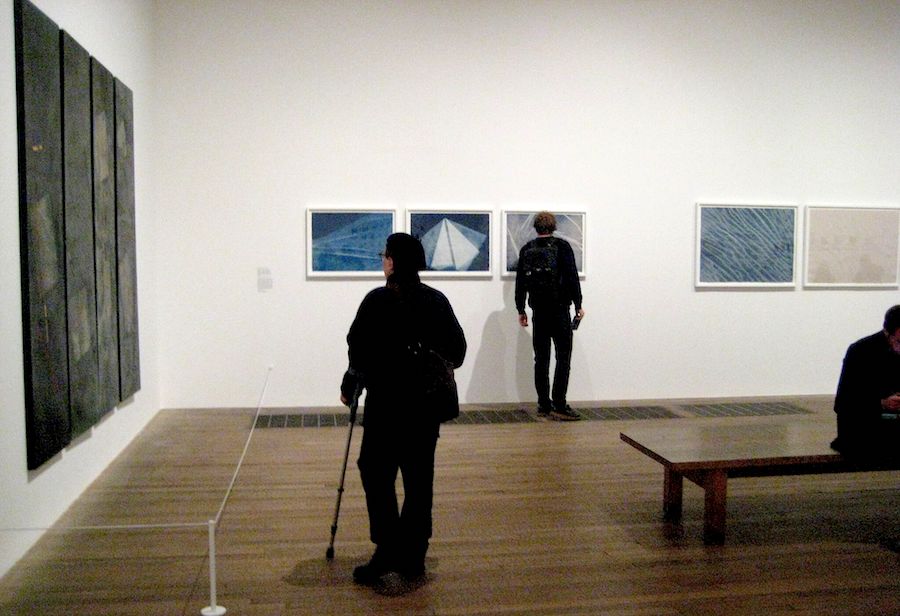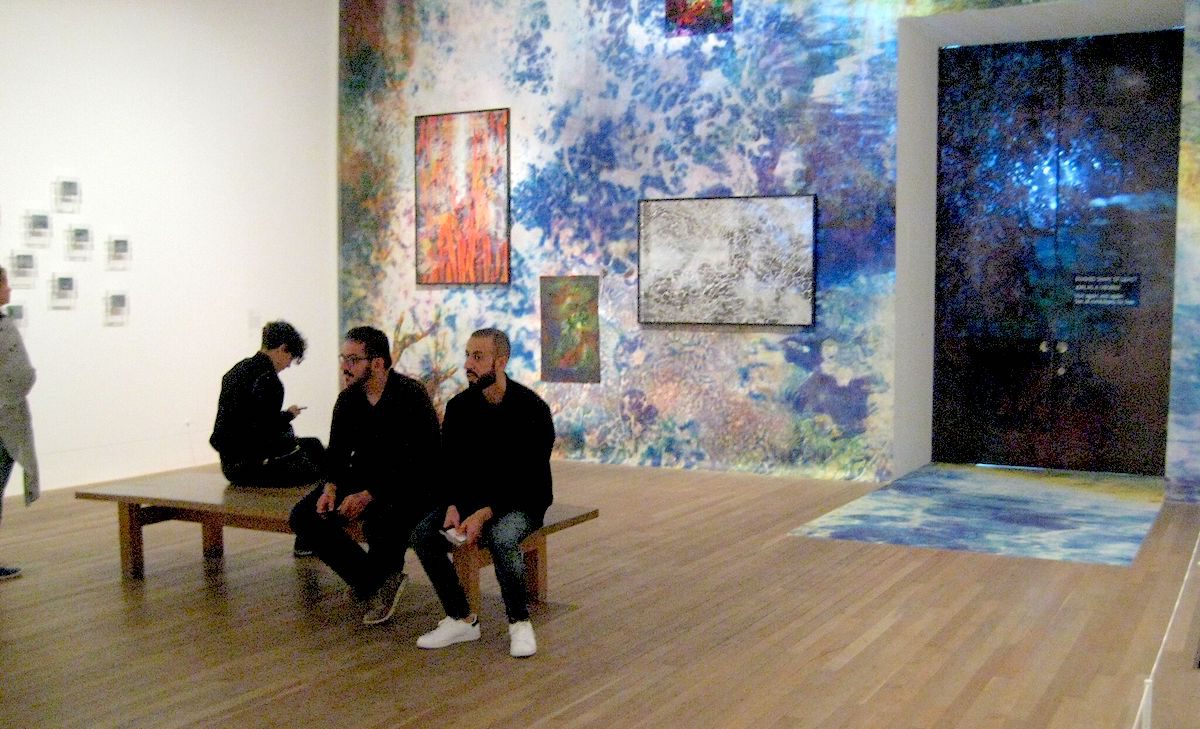Tate Modern’s new show, Shape of Light, has already received negative reviews from The Independent, The Times, and The Sunday Times. Only The Guardian and The Telegraph liked it, though the latter praises it in a rather ambiguous way:
“The work is stunning, but the question that has dogged it and continued to hover – the matter of whether or not [photography] should be considered art –is among the least imaginative ways to think about it.” Rather to my surprise, I find myself very close to agreeing with this verdict.
Clearly the curators don’t see it perceived as being purely something that involves looking at the world through a lens – ELS
Earlier in her piece, The Telegraph’s reviewer, Gaby Wood, remarks on the way that photography has had to struggle, and maybe struggles even now, against the perception that it is a technological upstart:
“This exhibition.” she says, “seems like a sibling to the one at the National Portrait Gallery [Victorian Giants: The Birth of Art Photography], in which 19th-century photographers are shown striving for status.”

At the Tate Modern show certain practical difficulties are evident. For a long way into the exhibition, there is a lack of colour and a lack of scale. Painting could go as big as it liked. It took photography a long time to achieve major scale, and when it did so, it didn’t do so in galleries but on billboards. Pop Art bastardised photography. To adapt a famous political saying, it “caught the ad men bathing, and stole their clothes.” Even big’n figurative, regarding seriously intended photography, took a certain amount of time to arrive. Large-scale abstract colour photography, as the exhibition demonstrates, took even longer to establish itself. It had to struggle against an elitist perception that ‘art photography’ could only exist in black-and-white. Anything else, so far as the photographic elite was concerned, was populist rubbish. The Tate show illustrates these difficulties without, I suspect entirely intending to do so.
A more serious problem, getting more serious as the show progresses, is the absence of any coherent sense of that photography now is. Clearly, the curators don’t see it perceived as being purely something that involves looking at the world through a lens. The definition of what is and is not a photograph has therefore been stretched to, and perhaps beyond the breaking point. Camera-less photography was born at least as long ago as the mid-1920s. Light and light-sensitive paper are sufficient. Today images, however they originate, can be altered, enhanced and distorted in the computer, until they entirely take leave of what can be seen in the in the real world using one eye.

In this sense, the barriers between what can be defined as photographic, or non-photographic, have completely disappeared.
The problem here, for me at least. Is that the rigorously non-photographic images in the latter sections of the show often striking me as flat, in all senses of the term, and boring to look at. Does it excite me to know that Sigmar Polke’s Uranium Green series (1992) was made using this radioactive material? Not really. Do I find the random shapes thus generated interesting? No, I don’t.
The really interesting things about the show – and it is interesting for long stretches despite what I’ve said here – are the tensions between what one knows to be real, and what happens to that reality in the hands of a skilled an imaginative photographer. In the earlier stages of the show, the hang is punctuated with paintings made by celebrated Modernist artists – Arp, Miro, Mondrian. The aim seems to have been not only to suggest similarities but to punctuate long stretches of stuff that is potentially boring to the uninstructed. At first, these paintings seem to face down the small black and white images they accompany. Gradually, however, one becomes aware that these modest images without colour have special qualities of their own. They do not exist in a separate sphere, as the paintings do. They are in conversation with things experienced in the real world that have been skilfully, and often wittily tweaked to produce what one sees. In turn, one enters into a conversation with these images from which the paintings are excluded.
Words/Photos: Edward Lucie-Smith © Artlyst 2018

